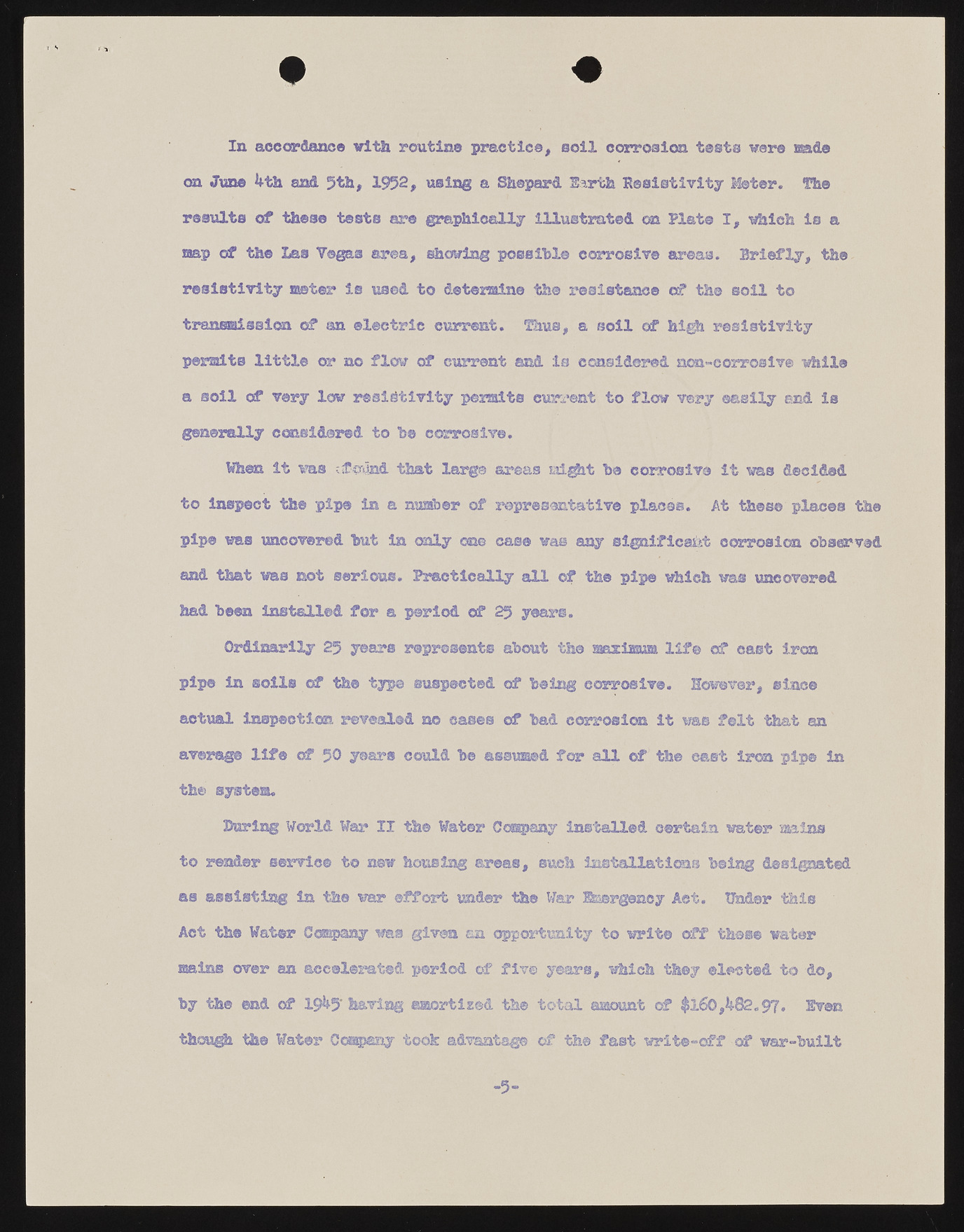Copyright & Fair-use Agreement
UNLV Special Collections provides copies of materials to facilitate private study, scholarship, or research. Material not in the public domain may be used according to fair use of copyrighted materials as defined by copyright law. Please cite us.
Please note that UNLV may not own the copyright to these materials and cannot provide permission to publish or distribute materials when UNLV is not the copyright holder. The user is solely responsible for determining the copyright status of materials and obtaining permission to use material from the copyright holder and for determining whether any permissions relating to any other rights are necessary for the intended use, and for obtaining all required permissions beyond that allowed by fair use.
Read more about our reproduction and use policy.
I agree.Information
Digital ID
Permalink
Details
More Info
Rights
Digital Provenance
Publisher
Transcription
In accordance vith routine practice, soil corrosion tests ware made on June 4 th and 5th, 1952, using a Shepard Barth Resistivity Meter. The results of these tests are graphically Illustrated on Plat® I, which is a aap of the Las Vegas area, showing possible corrosive areas. Briefly, the resistivity taster is used to determine the resistance of the soil to transmission of an electric current. Thus, a soil of high resistivity permits little or no flow of current and is considered ncn»eorrosiv® while a soil of very low resistivity permits current to flow very easily and is generally considered to b© corrosive. When it was ; found that large areas flight be corrosive it was decided to Inspect the pip® in a number of representative places. At these places the pipe was uncovered but in only one case was any significant corrosion observed and that was not serious. Practically all of the pipe which was uncovered had been Installed for a period of 25 years. Ordinarily 25 years represents about the maximum lif© of east iron pipe in soils of the type suspected of being corrosive. However, since actual Inspection revealed no cases of bad corrosion it was felt that an average life of 50 years could be assumed for all of the east iron pip® in the system. During World War II the Water Company installed certain water mains to reader service to new housing areas, such Installations being designated as assisting in the war effort under the War Emergency Act. Under this Act the Water Ocmpaay was given an opportunity to writ© off these water mains over an accelerated period of five years, which they elected to do, by the end of 1945' having amortized the total amount of $160,482.97. Even though the Water Company took advantage of the fast write-off of war-built

